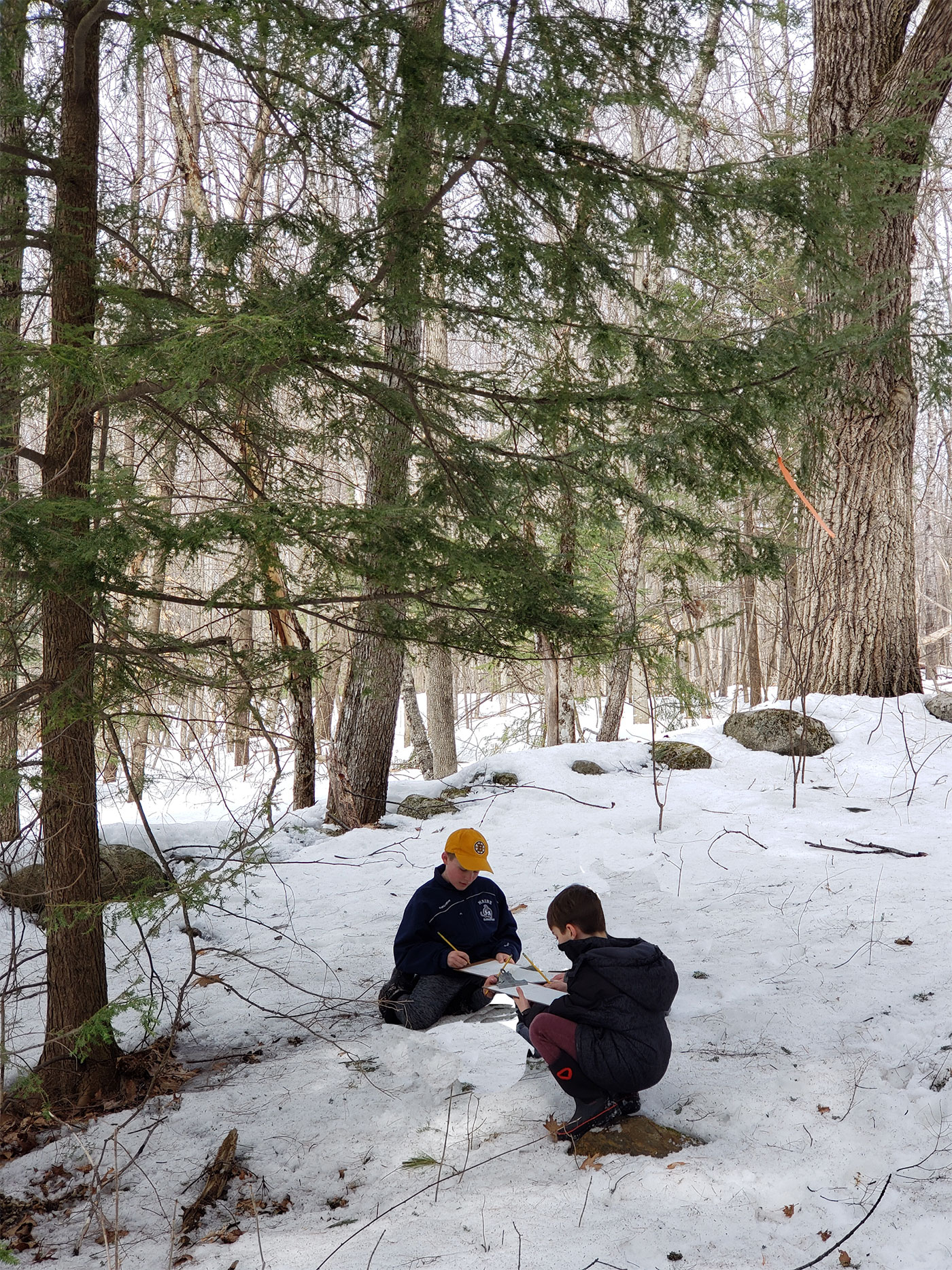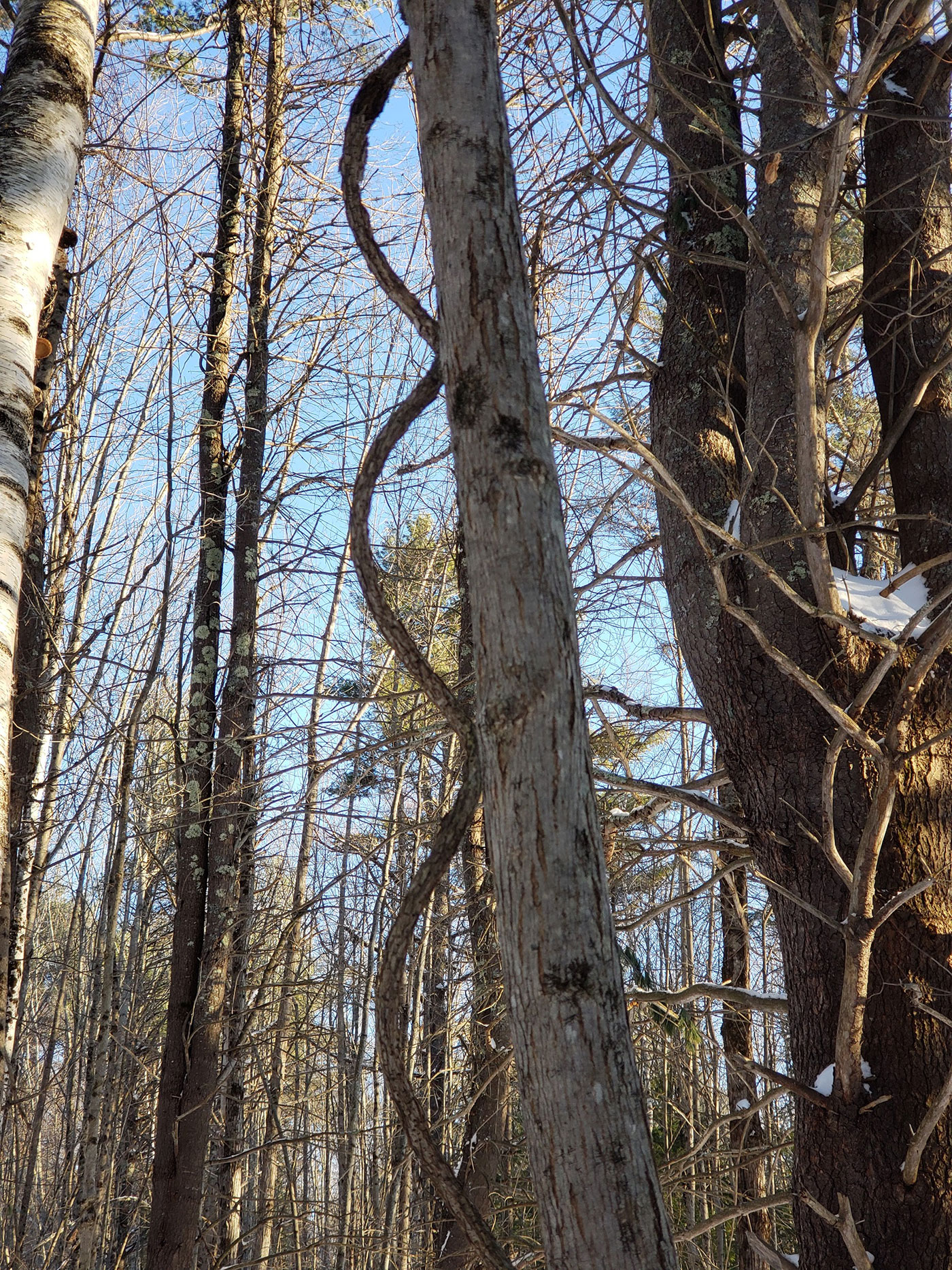Winters’ hold only loosened for a moment here at our school in the Western Lakes Region of Maine. Since our last blog post, the slow melting of snow, and now the addition of more, has only allowed for us to be out on our trail one day so far. Our school does “Quest” each Friday afternoon. To broaden the reach of our trail project, I gathered a group of 13 students from all grade levels to help support the work the sixth grade classrooms are doing.
The Quest students were given the task to “walk along the trail and make note of where we could add features to the trail that would be beneficial to people visiting.” We did a quick brainstorm to focus our purpose of finding areas for: reading, writing, picture taking, building with nature, relaxation spots, or places to put informational signs. As we headed out on the third-of-a-mile trail, we immediately noticed evidence of deer (scat and a deer trail) and squirrels (pinecone scraps and acorn leftovers). The students were excited to notice that the deer tend to follow where our trail leads. We noted that we will need to create some informational signs about deer and squirrels, plus the other local wildlife that are seen within our forested areas. The students felt that it would help teach people about what they might see as they walk and explore.
Below, two students (a 5th and 3rd grader) find a spot they recommend as a designated reading area. They commented that the fir tree would provide a good covered spot to read.

Below, students noticed a cool looking vine that seems to wrap around other trees. When further investigated, we discovered it is an invasive species called Asian Bittersweet—Celastrus orbiculatus. This would be a great place for an informational sign to inform the visitors about invasive species and their impact on the local ecosystem.

Even though we haven’t been able to spend much time out on the trail, that doesn’t mean we have stopped working! Many students wanted to create birdhouses to not only encourage more birds along the trail, but to also as a form of decoration and give people something to look for as they walk. We incorporated the birdhouse idea into an engineering project for sixth graders. Each group of three or four students were given a pine board six feet long and six inches wide. They were then asked to design a birdhouse using only that board. Students did some research on the computer and some modeling in class to make a plan, and then marked the cut lines on the board.
After the boards were cut, students started to assemble them. They soon realized that some of the plans were not what they had hoped for, and so improvisation and problem-solving skills were put to use that day! In the end, every group made a birdhouse! One student said her favorite part was, “making homes for homeless birds.” When the sixth graders finished building the birdhouses, the “Quest” group decorated them. Collaboration skills were discussed, and the idea that in many careers, you rarely do a project start to finish on your own, but instead it takes teams of people all doing their specialty to bring a project to completion.
We are hopeful that spring will truly arrive soon – as the students are ready to get outside and revitalize our trail! We are grateful to the Natural Resources Council of Maine and all of their donors for the opportunities to get our students outside to make a lasting impact on our school and for giving us a real-life purpose for learning about the natural resources of Maine.
-Rob Ripley











Leave a Reply